We would like to introduce the VELscope Vx. This is a diagnostic tool used to aid in the detection or oral abnormalities. The VELscope Vx is currently the most powerful and conservative tool available for assisting in the discovery of these conditions. The VELscope’s distinctive blue-spectrum light causes the soft tissues of the mouth to…
Click to read moreOraverse Announcement
Your comfort is an important priority in our practice. So if you’re someone who dislikes the lingering numbness of local anesthesia and the way it can limit your daily activities, an innovative solution is here. Our office is now offering a new product called OraVerse®. OraVerse is the first and only product of its kind…
Click to read moreExperience what Zoom 3 WhiteSpeed Has to Offer
As many of you know I have been offering Zoom bleaching in the office for over 15 years. The Philips company has recently taken over production of Zoom and greatly improved what was already a superior product. They have recently introduced Zoom 3 WhiteSpeed, and I have upgraded my system to the new version. The…
Click to read moreNew Digital X-Ray Technology in Use
We take great pleasure in announcing that our office now utilizes DEXIS® Digital X-ray in the taking of dental X-rays. DEXIS is a computerized X-ray system that replaces standard film and its processing. This provides you, our patients, with several distinct advantages: Reduction in Radiation – Digital X-rays utilize a highly sensitive sensor rather than…
Click to read moreOral Piercing
Oral piercing can cause pain, swelling, infection, drooling, taste loss, scarring, chipped teeth, and tooth loss. Most dentists discourage oral piercing due to the many risks involved. If you do decide to get an oral piercing it is important to understand the regulations, associated problems and proper maintenance. What problems can the piercing cause? Fractured…
Click to read moreEating Disorders
Pop, candy, coffee–you’ve heard the countless number of things will cause dental erosion, abrasion, and tooth loss, but eating habits matter just as much as what you consume. According to a study published in General Dentistry , eating disorders play a major part in dental erosion, abrasion, and tooth loss, as the consumption of foods or beverages that contain acids cause damage to tooth structure.
Click to read moreAcid Erosion
When picking up a prescription at their pharmacy, consumers receive information on potential side effects, which help them to understand the results of taking that medication. Check the nutrition information on a can of soda, carton of yogurt, or jar of pickles, however, and they won’t find listed a common and detrimental “side effect” for their oral health: tooth erosion.
Click to read moreMusicians and Dentistry
We all know that everyone needs to see a dentist, and everyone’s mouth is different. But certain patients use their mouths in different ways than the average dental patient. Musicians who use their mouths to play musical instruments have very specialized needs of which their dentists need to be aware.
Click to read moreAnxiety
Does anesthesia make you antsy? Does the chair make you cringe? If so, you’re not alone – fear of the dentist is a common one. So much so, in fact, that more than 20 million Americans avoid going to the dentist because of fear, according to the National Institutes of Health.
Click to read moreFlossing
Do I really need to floss? Yes. Floss removes plaque and debris that sticks to teeth and gums in between teeth, polishes tooth surfaces, and controls bad breath. Flossing is the single most important weapon against plaque and, in some ways, more important than the toothbrush. By flossing your teeth daily, you increase the chance…
Click to read moreDentures
More adults are living longer and healthier lives. According to U.S. Census data, more than 12 percent of the population is age 65 or older. And, among adults ages 35 to 44, 60 percent have lost at least one permanent tooth. So, as life expectancy increases and the baby boomer population ages, the need for versatile dental treatment options is necessary.
Click to read moreOsteoporosis
Breast cancer patients, individuals at risk for osteoporosis, and individuals undergoing certain types of bone cancer therapies often take drugs that contain bisphosphonates. Bisphosphonates may place patients at risk for developing osteonecrosis of the jaws (a rotting of the jaw bones), according to a case report and literature review that appeared in General Dentistry.
Click to read moreDental Tourism
While most people may not associate combining their vacation time with a dental visit, the Academy of General Dentistry (AGD) reports that the concept of dental tourism is becoming increasingly popular with Americans looking for lower-priced dental care.
Click to read moreTooth Whitening
In today’s society, the emphasis on one’s appearance is unavoidable. Consumers receive messages on a daily basis regarding products to help them lose weight, change their skin’s appearance, or improve the whiteness of their teeth. Tooth whitening in particular has seen a dramatic increase in popularity over the years, due to the reasonable price of the products and the increase in public demand.
Click to read moreTeen’s tongue piercing linked to pain
Chicago – The teenager said the stabbing pains in her face felt like electrical shocks that lasted 10 to 30 seconds and struck 20 to 30 times a day. Her doctors diagnosed trigeminal neuralgia, a nerve disorder sometimes called “suicide disease” because of the excruciating and dispiriting pain it causes. Doctors tried painkillers, then stronger…
Click to read moreCan raspberries inhibit oral cancer growth?
Researchers from the University of Kentucky (UK) and the Ohio State University (OSU) are attempting to wield the cancer-inhibiting properties of black raspberries to slow down tumor growth in oral cancer. Researchers and natural foods advocates believe the pulp of black raspberries contains two substances with anti-oxidant and anti-inflammatory properties, as well as the ability…
Click to read moreAre gender specific drugs the future of pain relief?
According to researchers at the University of Bath in England, women report more pain, experience it in more bodily areas, and have pain more often and for longer durations than men. Jeffrey Mogil, Ph.D., director of the pain genetics laboratory at McGill University in Montreal, is convinced that pain response is mediated by different brain…
Click to read moreSkiing the Austrian Alps? Pack your mouthguard
Sports participation is part of everyday life for many people, but without the proper oral protection, a trek on the mountain bike or finally conquering that ski slope could cause permanent tooth damage, according to a study in the General Dentistry. Researchers recorded data on dentofacial injuries at a hospital in Austria, and found that…
Click to read moreAmalgam OK during pregnancy
Placing a dental amalgam restoration, or even multiple restorations, in the mouth of a pregnant woman does not increase her risk of delivering a low-birth- weight baby, a new study has found.
Click to read moreLong-time partners fight tooth decay
SKULLS OF THE CRO-MAGNON PEOPLE, who inhabited the earth 25,000 years ago, show that humans have been plagued with oral health problems for thousands of years. In turn, techniques for combating oral health problems have been found dating back to 2900 B.C. when Egyptians drilled holes through the jaw presumably to drain abscessed teeth, reports…
Click to read moreSippy-cup syndrome – Is your toddler at risk?
From pre-schools to playgrounds, booster seats to tricycles, sippy cups are easy to find clutched in the little hands of toddlers. Developed for children who’ve outgrown bottles and are too young to manage a full-size cup on their own, sippy cups offer parents an easy spill-proof way to get through the day. However, parents may…
Click to read moreMen in White Use New Ways to Destroy Dental Decay
Dental decay, once commonly treated with a “drill ‘em and fill ‘em” approach, is now widely being treated as a preventable infectious disease by the dental community. This new treatment method could be the next big dental breakthrough for patients, reports the Academy of General Dentistry. “In the past, if dental decay progressed and formed…
Click to read moreHealth Briefs
A study of patients at the Long Island Jewish (LIJ) Medical Center found that long-term use of biophosphonates—a treatment for advanced cancer and for osteoporosis in post-menopausal women—is linked to osteonecrosis of the jaw.
Click to read moreTop Tips for Men To Visit their Dentist
Detection of Periodontal Disease A recent survey found that 34 percent of males ages 30 to 54 and 56 percent of males ages 55 to 90 have periodontitis—a much larger number than females. Characterized by bleeding gums, stained teeth and shifting teeth and gums, periodontal disease has been linked to heart and kidney diseases. Detection…
Click to read morePut a New Face on Your Smile – and a New Smile on Your Face
Do chipped, stained or crooked teeth keep you from beaming your smile to the world? Does the thought of major cosmetic dentistry make your teeth itch? Then porcelain veneers might be the answer for you, according to the Academy of General Dentistry. “The great thing about veneers is they allow a conservative approach to long-…
Click to read moreMen: Looking for a Better Job? Start by Visiting the Dentist
A new online poll of 289 general dentists and consumers confirms the traditional stereotype that men are less likely than their female counterparts to visit the dentist according to the Academy of General Dentistry. Why? Nearly 45 percent of respondents felt that men don’t see a need to go to the dentist, and about 30…
Click to read more“Alamo” Gum
Bubble gum’s entrance into the US market place first occurred in the early 1870s, although it was reputed to have made its debut during the Battle of the Alamo in 1836. In both cases, it was introduced by none other than General Antonio López de Santa Anna, the Mexican dictator who fought and defeated the…
Click to read moreGum-chewers Have New Reason to Smile
In the eighties, artificial sweeteners in blue and pink packets, diet soda and sugar- free gum set the standard as “healthy” alternatives to their sugar-laden parent products. Today, there’s a new sweetener called xylitol touting sweet-as-sugar taste, a low-calorie makeup and studies now show it may help reduce and prevent cavities. A natural sweetener found…
Click to read moreFlossing
Some people loop. Some people spool. Others simply refuse. The verdict is in: Flossing is one of the best things you can ever do to take care of your teeth. “Flossing every 24 hours to break up plaque is imperative for good oral health,” says Gordon Isbell, DMD, MAGD, spokesperson for the Academy of General Dentistry (AGD).
Click to read moreDental Implants
Dental implants, an artificial tooth root surgically anchored into a jaw to hold a replacement tooth or several teeth in place, offer a permanent solution to replace lost or extracted teeth. Implants have become a treatment of choice for some patients to eliminate the need for removable partial or complete dentures.
Click to read moreDry Mouth
Having difficulty speaking, eating and swallowing? Under stress, upset or taking medications? These combinations place people at risk for a painful condition known as dry mouth, according to an article in the December issue of AGD Impact , the Academy of General Dentistry’s (AGD) monthly newsmagazine.
Click to read moreChildren’s Oral Health
A spoon full of sugar may help the medicine go down, but most dentists would likely encourage parents to skip that step when treating a child’s illness. However, most parents might not realize that even without the sugar, some children’s medicines may cause cavities while they’re fighting other health issues, according to a report in General Dentistry .
Click to read moreMouthguards
According to the U.S. Census Bureau, more than 74 million students will head back to school this fall, however, according to the National Youth Sports Safety Foundation (NYSSF), many of those students end up as part of the 15 million dental injuries and five million cases of traumatically lost teeth that occur every year.
Click to read more


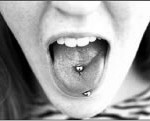





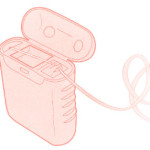
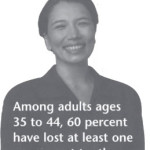
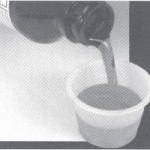
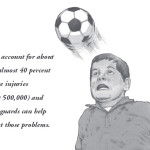
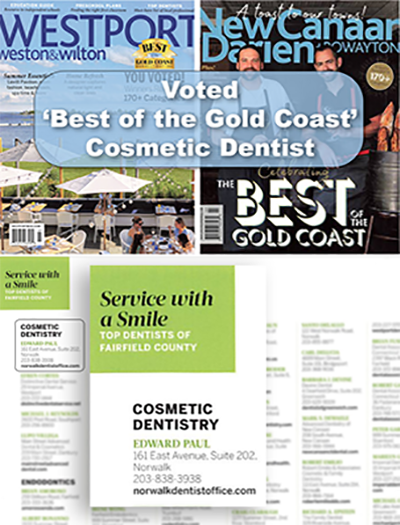
 Click or Scan Code
Click or Scan Code